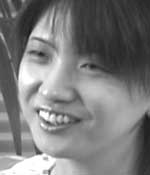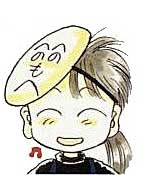
by Luis Reyes
Like many female manga and anime artists, Watase Yu's tacit demeanor belies her strength. We meet in a top-floor hotel suite overlooking Long Beach Harbor at Anime Expo 2001. I'm ushered in at the elbow by Viz staff, all of them highly charged over the buzz generated by Yu's latest manga title turned anime, Ayashi no Ceres (translated as Ceres, Celestial Legend by Viz). She sits on a plush couch in front of a grand piano while I sit on an equally plush couch opposite her, a glass coffee table separating the two of us. In the middle of a string of interviews, Akadot's the only non-video for the day, she looks a little worn and somewhat board. But there's a lingering intensity in her eye, as if she would rather be creating manga than having another interview - not because she's shy, but because she is happiest when she is creating manga. Circumscribed by a suspiciously all-male ring of publicists, camera crews and, well quite frankly, attendants, we begin. Manga itself is a unique synthesis of art and storytelling in which neither can really carry its own. Therefore the manga artist (mangaka) must wear two hats, so to speak - that of an artist and that of a storyteller. "In my job, I have to do both," she says confidently. "Personally I think I still have a lot to learn in both. But I think being a manga artist is a job that requires both aspects. It has to. I think some people might find it easier to draw, and others might find it easier to come up with a story. I find it much easier to draw. It's really hard to come up with a story." Perhaps where the two meet for Watase Yu is in her fascination with character, a narrative vehicle that is as much about what appears on the outside as about what appears on the inside, the conflict between the outside and the inside being the source of her bold melodrama. She admits that she enjoys creating characters most of all, and attributes it to why so many fans describe her work as a complex patchwork of motivations and consequences. However, Yu sees her emphasis on character as a way to simplify the story.
"Certainly for me, and I know for a lot of others," she explains, "If you tell the story through the characters, it's easier for the reader to relate and become part of the story themselves." And changes in character, and in her case many different characters, lies at the core of how Yu shapes her seemingly complex narratives. But in essence, every character is just another reflection of her.
|


